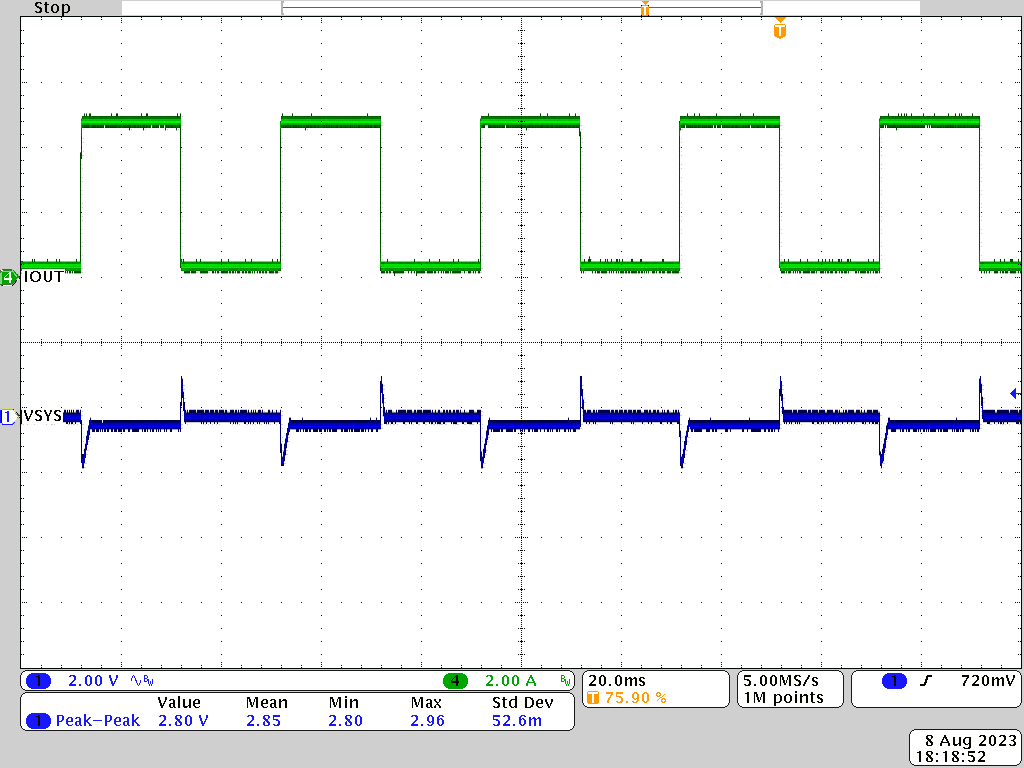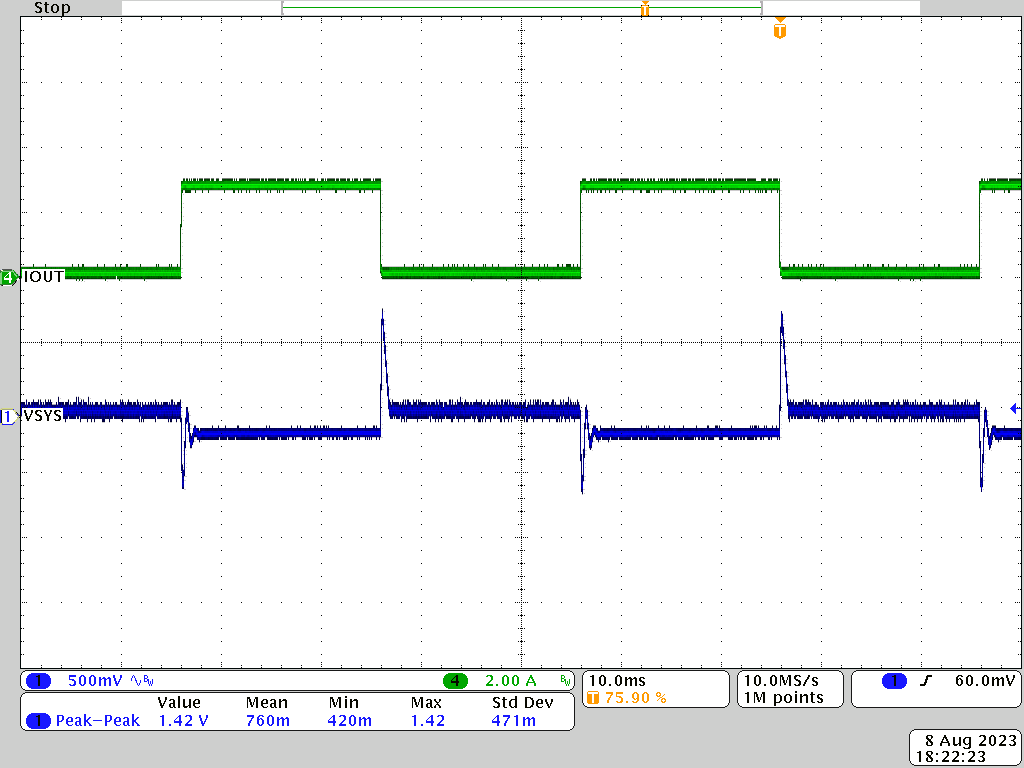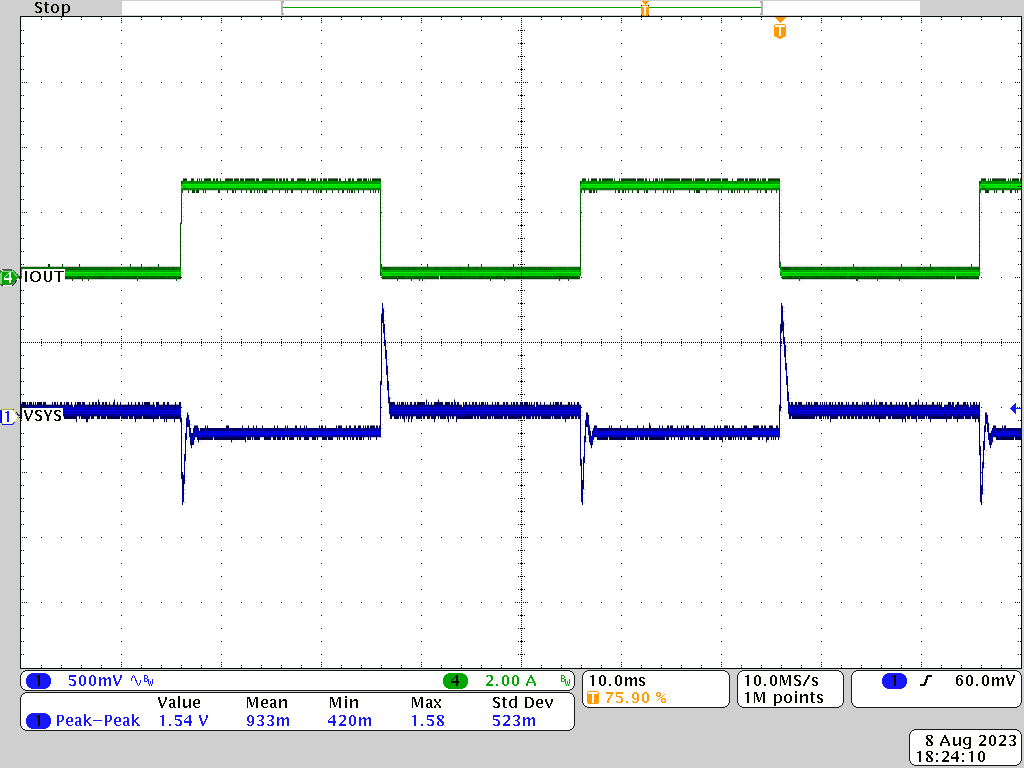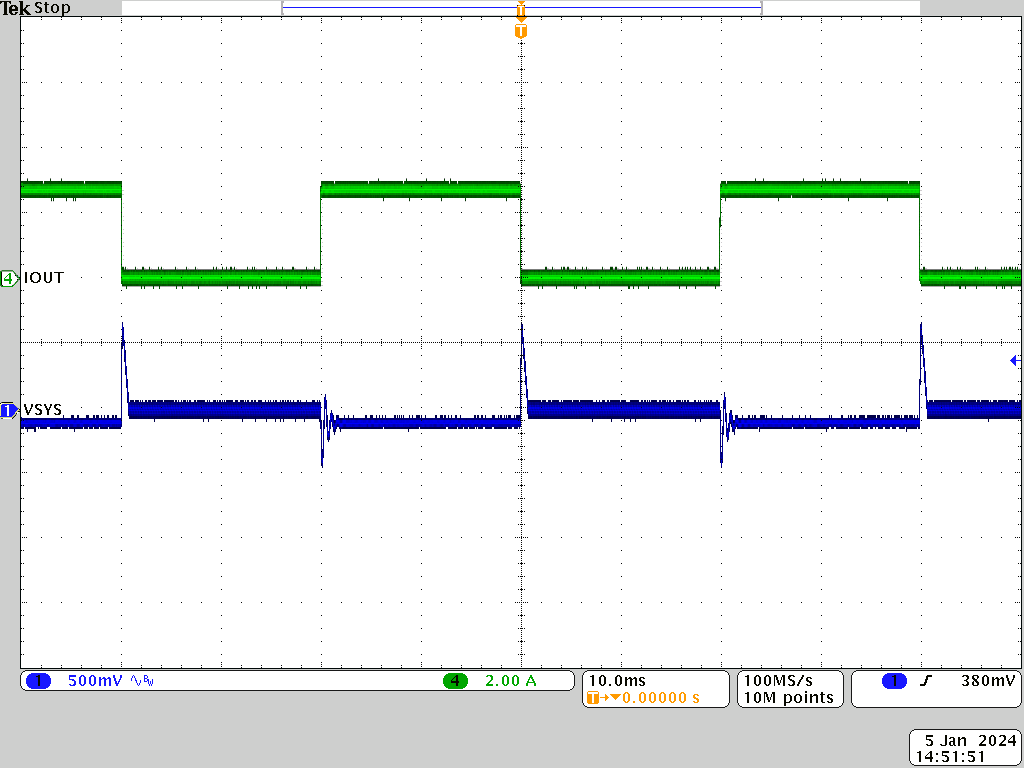TIDT349 January 2024
- 1
- Description
- Features
- Applications
- 1Test Prerequisites
- 2Testing and Results
-
3Waveforms
- 3.1 Charge Mode Start-Up Waveform
- 3.2 OTG Mode Start-Up Waveform
- 3.3 Voltage Transition at OTG Mode
- 3.4 Ripple and Noise at OTG Mode
- 3.5 Load Transients at OTG Mode
- 3.6 Switching Waveform
- 3.7 Overcurrent Protection at OTG Mode
- 3.8 Short-Circuit Protection at OTG Mode
- 3.9 Short-Circuit Protection at Charge Mode
3.5 Load Transients at OTG Mode
The load dynamic test was performed from 10% to full load for 5V, 9V, 15V, and 20V individually, the slew rate is set to 0.5A / μs, output voltage was measured at the PCB end of the USB Type-C receptacle.
 Figure 3-17 OTG Mode, 20V, 10% to 100% Load Dynamic
Figure 3-17 OTG Mode, 20V, 10% to 100% Load Dynamic Figure 3-19 OTG Mode, 9V, 10% to 100% Load Dynamic
Figure 3-19 OTG Mode, 9V, 10% to 100% Load Dynamic Figure 3-18 OTG Mode, 15V, 10% to 100% Load Dynamic
Figure 3-18 OTG Mode, 15V, 10% to 100% Load Dynamic Figure 3-20 OTG Mode, 5V, 10% to 100% Load Dynamic
Figure 3-20 OTG Mode, 5V, 10% to 100% Load Dynamic